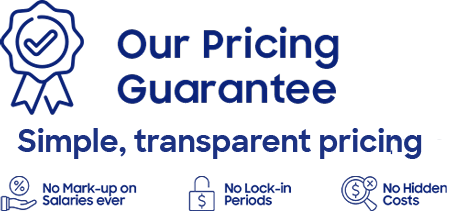Navigating the future of work
After a couple of years of working purely from home, Philippine-based tech support specialist Victoria Samson finally got to reunite with her colleagues when they transitioned to a hybrid work setup.
Victoria said working remotely has a lot of perks, but it can get lonely when you only connect with people through Skype or Zoom meetings.
For many companies, the last couple of years served as long pilot runs for implementing remote work solutions, thanks to the restrictions borne out of the COVID-19 pandemic. These solutions, for the most part, were a success, proving their feasibility in the long term.
But with the easing of travel restrictions, many organizations are starting to look at hybrid work solutions as they ease into the post-pandemic era of business.
The rise of hybrid work
Research by insurance advisor firm Willis Towers Watson (WTW) showed that most employees prefer a hybrid arrangement, with most leaning towards remote work.
While people appreciate the advantages of working at home, such as work life balance, many have come to understand its shortcomings, especially when collaborating with colleagues.
Millennial and Gen Z employees, or workers aged 18 to 40, are the ones who said they felt disconnected and less engaged in a purely remote setup.
The rise of hybrid work aims to keep the advantages of remote work while taking some of the benefits of working at the office.
A sense of community at work
Finding a sense of community at work is the top reason why many employees opt for a hybrid work environment.
A Harvard Business Review study found that people naturally prefer personal interaction over virtual interaction because it allows for a more meaningful exchange of ideas, emotions, and experiences.
In a face-to-face conversation, people can pick up on non-verbal cues, such as body language and facial expressions, which are not possible in a virtual conversation.
In addition, physical presence provides a sense of closeness, trust, and understanding that can be difficult to replicate online.
Beyond hybrid
In the early months of the pandemic, employee wellness and work flexibility took the spotlight when it comes to managing and retaining talent.
Today, in a post-pandemic world, finding purpose and bringing back a sense of belongingness with colleagues has found its place in the spotlight as well.
With this shift in talent market behavior, many organizations were quick to go hybrid, only to realize that the situation is not as simple as just a return to the office.
Going hybrid, for one, may be meaningless if workspaces, processes and company culture remain the same. People are at the office looking for more meaningful interactions, and not just working on deadlines. What the situation demands is a bit of rethinking and, by extension, some redesign.
Some organizations are enhancing the hybrid experience by focusing on improved employee experiences, finding new ways to engage and foster a diverse and inclusive workforce. Aside from the usual team building, firms conduct themed quiz nights, zumba, and workout sessions.
Flexible work setups can also be improved by visually sprucing up the office, maybe a re-layout of the workspace if budget allows.
There has been a huge emphasis on multiskilling, reinventing benefits and perks, implementing rewards to match the rising salaries across industries, and providing clear career paths for employees. Companies giving out annual awards to recognize skilled and hardworking talents is now commonplace.
Talent is the bottom line of all changes
Technology will keep on evolving. Unforeseen events like the pandemic will still happen. They will usher in more changes in the future. And the key to thriving in the ever-changing business landscape is acquiring and retaining the best staff.
Organizations with constant access to the right talent, and the ones flexible enough to adjust to changes in technology, the economy and the global community, will be the industry leaders of tomorrow.
In fact, a separate WTW survey on Reimagining Work and Rewards showed that tapping new sources of talent is a key priority for companies who are rethinking their ways of business.
The survey indicated that nearly all employers recognize the need for continuously tracking the evolving skill requirements to stay flexible and agile in the future.
Furthermore, the findings also showed that more organizations are keen on building “talent ecosystems” to anticipate talent needs in the next three years.
While solutions are in place, actual implementation can be challenging, which leads many organizations to look at outsourcing as a strategy to build and sustain these talent ecosystems.
Outsourcing, especially in this era of skills gap, helps provide labor on demand. Candidates are sourced from top tier markets around the world at a fraction of the usual hiring costs, contributing to an organization’s potential and scalability.
Moreover, technologies developed over the course of the pandemic allow organizations, big and small, to leverage outsourcing as part of their strategy in future-proofing their business and navigating the future of work.
Partnering with the right outsourcing provider, companies can build teams that are focused, productive and engaged, whether they choose to go hybrid or not.

















